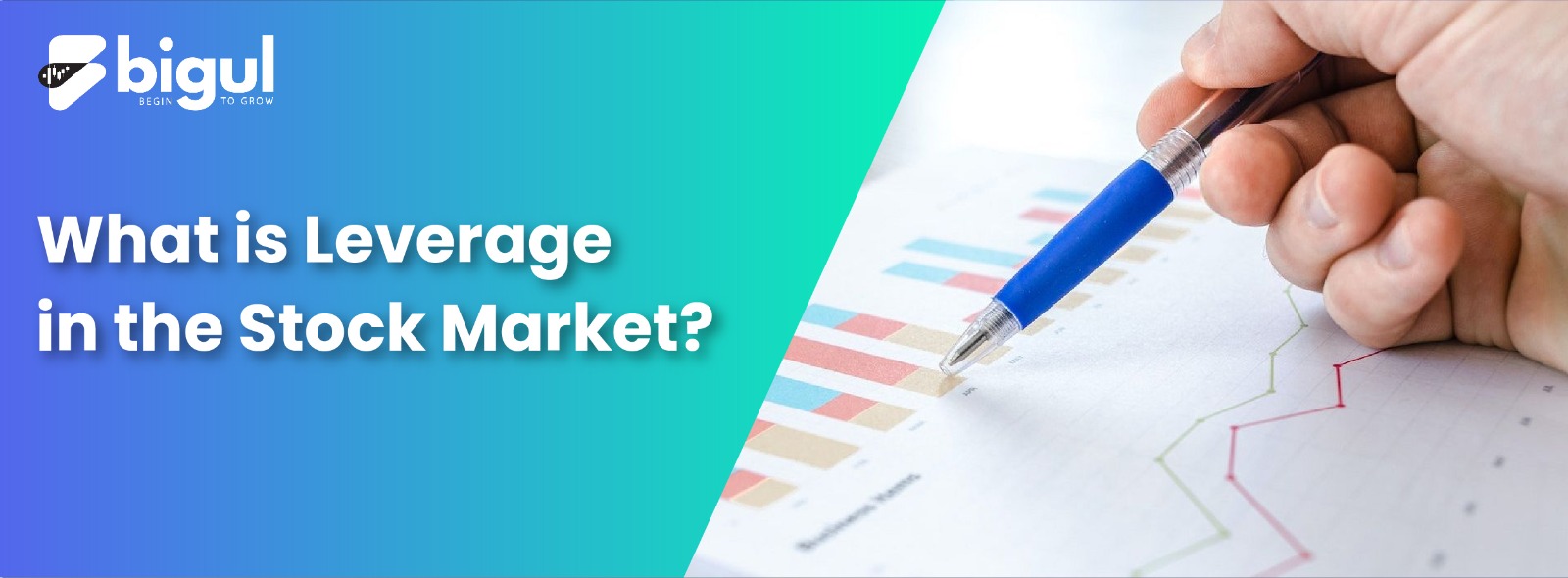Leverage trading is a pivotal concept in the world of stock markets. It offers investors a potent tool to increase their potential gains, yet it comes with equally substantial risks.
In essence, leverage allows traders to control a more substantial position in the market than their actual capital, borrowing funds to maximize their exposure. This financial technique has the potential to accelerate profits but also heightens the susceptibility to losses.
Any investor who wants to navigate the stock market must understand leverage trading. This discussion will explain the concept of leverage in stock markets, its benefits, and drawbacks.
What is Leverage in the Stock Market?
Leverage trading involves using borrowed funds or increasing the number of shares traded beyond what you can purchase with cash alone.
While it can be advantageous when approached with knowledge and risk awareness, it can also be perilous, potentially resulting in substantial losses exceeding your initial investment.
Careful consideration and understanding of leverage are crucial to navigating its potential benefits and pitfalls effectively.
How Does Leverage Work?
Leverage in stock trading involves augmenting your exposure to an asset by utilising a margin deposit. This means you commit only a fraction of your trade’s total value, with the provider lending you the remainder.
The leverage ratio represents the relationship between your total exposure and the margin you’ve put down, serving as a crucial metric to gauge the extent of your leveraged position.
How to Use Leverage in the Stock Market?
Using leverage in the stock market can amplify both potential gains and losses. The following are the various ways investors and traders might use stock market leverage:
- Margin Trading: Margin trading involves borrowing funds from a brokerage to purchase stocks. Investors open margin accounts and provide a portion of the trade’s total value as collateral. This allows them to control a more substantial position than their available capital alone would permit. While margin trading can amplify profits, it also increases the risk of losses. If the value of the securities purchased falls below a specified level, a margin call may be issued, requiring additional funds or asset sales to cover the deficit.
- Derivatives Trading: Derivative trading involves financial contracts whose value derives from an underlying asset, such as stocks. In the stock market, investors can utilise derivatives like options and futures to gain leverage. Options give the right (but not obligation) to buy or sell stocks at a predetermined price, allowing control over a larger position with a smaller upfront investment. Futures contracts work similarly, offering leveraged exposure to stocks, indices, or commodities, often used for hedging or speculation.
- Leveraged ETFs: Leveraged ETFs are specialised exchange-traded funds designed to provide amplified returns based on a specific underlying index or asset. They achieve this by using financial derivatives and debt instruments. For instance, a 2x leveraged ETF aims to deliver twice the daily returns of its benchmark index. However, these funds are typically intended for short-term trading due to compounding effects, and their performance can significantly deviate from the long-term performance of the underlying index.
Benefits of Using Leverage Trading
Here are some benefits of using leverage trading in the stock market:
- Magnified Returns: Leverage amplifies both gains and losses. If a trade goes in your favour, the returns are multiplied by the leverage ratio, potentially leading to substantial profits.
- Capital Efficiency: Leverage enables traders to use a smaller amount of their own capital to control a larger position. This can be especially useful for traders with limited funds who want to participate in markets they couldn’t otherwise access.
- Diversification: Leverage allows traders to diversify their portfolio and spread risk across multiple assets or positions. Without leverage, achieving meaningful diversification may require a substantial amount of capital.
- Hedging: Traders can use leverage to hedge their existing positions or investments. By taking opposite positions, they can offset potential losses in one asset with gains in another.
- Short Selling: Leverage facilitates short selling, where traders’ profit from declining asset prices. Without leverage, short selling can be challenging and costly.
- Flexibility: Leverage provides flexibility in trading strategies. Traders can adjust their position sizes according to market conditions and their risk tolerance.
- Liquidity: Leverage trading often occurs in highly liquid markets, making it easier to enter and exit positions.
Risks of Leverage in the Stock Market
Leverage raises benefits but also carries considerable risks. The main risks of stock market leverage are:
- Magnified Losses: Leverage increases the size of your investments, which means that if the market moves against you, losses are also magnified. Even a small price decline can result in substantial losses, potentially exceeding your initial investment.
- Interest Costs: When you use leverage, you typically borrow money to invest. This borrowing comes with interest costs that can eat into your profits or exacerbate losses, especially in a high-interest-rate environment.
- Margin Calls: Brokerages may issue margin calls if the value of your leveraged positions falls below a certain threshold. To meet a margin call, you must deposit additional funds or sell assets at potentially unfavourable prices, which can lead to significant losses.
- Market Volatility: Leveraged positions are highly sensitive to market volatility. Rapid price fluctuations can trigger margin calls or result in forced liquidation, leading to losses even if you believe in the long-term prospects of your investments.
- Limited Time Horizon: Leveraged investments often have a shorter time horizon because the longer you hold them, the more likely you are to incur interest costs and be exposed to market fluctuations. This limits your ability to weather short-term market turbulence.
Some investors, like skilled traders with a well-planned strategy, can use leverage. However, it is not for everyone and should be used cautiously with full knowledge of the risks.
Leverage Strategies
Leverage strategies are essential for investors who want to use leverage effectively while minimizing potential risks. These strategies involve careful planning and risk management to ensure that leverage works in your favour rather than against you.
Here’s an explanation of some leverage strategies:
Margin Trading: Margin trading involves borrowing funds from a brokerage to purchase more shares than your available capital allows. It amplifies both potential gains and losses. While it can enhance profits in a rising market, it also increases the risk of significant losses. Traders should closely monitor margin interest rates and maintain a keen awareness of margin calls, which could force the sale of assets if account equity falls below a certain level. It’s a high-risk strategy requiring careful consideration and risk management.
Leveraged ETFs: Some Exchange-traded Traded Funds (ETFs) use a financial tool called leverage to change how much money they make or lose compared to the overall market. There is also something called “Inverse ETFs.” These funds aim to do the opposite of what a specific market measure does. For instance, a “3x inverse ETF” tries to make three times the amount of money that the market measure loses. So, if the market measure goes down, this ETF goes up by three times that amount.
Trading Derivatives: An alternative approach to trading with leverage involves the use of options. In this method, a single option contract typically involves a hundred shares of the underlying security. By purchasing an options contract, you gain control over 100 shares at a fraction of the cost it would take to buy 100 shares of the actual company. This allows for the potential of significant changes in the option’s value in response to even minor fluctuations in the price of the underlying security.
Conclusion
Leverage is a powerful tool in the stock market that can amplify both gains and losses. While it offers the potential for higher returns and diversification opportunities, it comes with significant risks that demand careful risk management and strategic planning. Investors should approach leverage with caution, understanding its dynamics and always keeping risk mitigation strategies in place to navigate the volatile waters of the stock market successfully.










